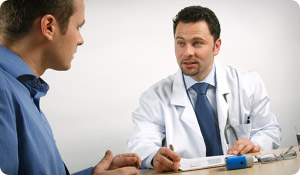
According to the Centers of Disease Control and Prevention (CDC), one percent of American men will be diagnosed each year resulting in nearly 400 deaths.
In recent years, the awareness of testicular cancer has risen, likely due to Tour de France winner Lance Armstrong receiving his own diagnosis back in 1996.
Men between ages 15 and 34 are at the highest risk for testicular cancer. In addition to this age range, there are other factors that could increase the risk:
- Family history of testicular cancer
- Having many moles or spots on the skin
- HIV/AIDS
- Cryptorchidism (Undescended testicle)
Screening
Conventional wisdom would suggest that you should head to the doctor for screening. However in this case, screening is not necessary. According to the CDC, screening really isn't a contributing factor to a low mortality rate of testicular cancer. Instead, self-exams are suggested.
To perform a proper and thorough self-exam, follow these steps as suggested by the American Cancer Society:
1. Hold your penis out of the way and check one testicle at a time.
2. Hold the testicle between your thumbs and fingers of both hands and roll it gently between your fingers.
3. Look and feel for any hard lumps, smooth rounded bumps, or any change in the size, shape, or consistency of the testes.
Note that the epididymis can feel like a bump on the upper or middle outer side of the testicle. Additionally, one testicle is typically larger than the other.
Symptoms
While the following symptoms are not always indicative of cancer, if you experience them, visit your doctor.
- Lumps or masses
- Swelling
- Dull pain
- A feeling of heaviness in the scrotum
- Pain in the lower back
- Lack of energy
- Sweating for no reason
Treatment
According to the CDC, the survival rate for men diagnosed with testicular cancer is approximately 96 percent. This is primarily because the tumors are detected at early stages and because the disease responds well to chemotherapy and radiation.
In many cases, surgery will be required to remove the tumor or the entire testicle. In advanced cases, radiation or chemotherapy may be prescribed to address cancer that has spread to the lymph nodes.
Sources:
American Cancer Society
Self-Exam
http://www.cancer.org/Cancer/TesticularCancer/MoreInformation/DoIHaveTesticularCancer/do-i-have-testicular-cancer-self-exam
Centers for Disease Control and Prevention
NPCR Education and Training Series
Male Genitourinary Malignancies
American Cancer Society
Do I Have Testicular Cancer?
http://www.cancer.org/cancer/testicularcancer/moreinformation/doihavetesticularcancer/





